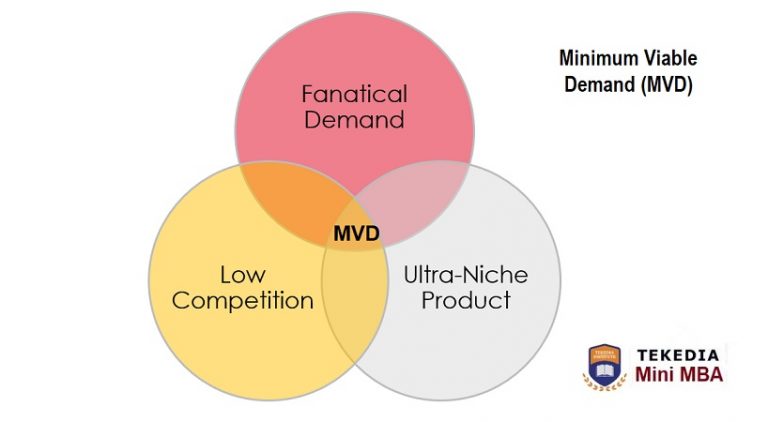
Market systems are inherently imperfect because of information asymmetry which makes it difficult for demand and supply to attain an optimal equilibrium point. To fix that imperfection, you need companies to operate in markets. Companies provide the platforms, which bring the demand and supply together, so that transactions can take place.
You are hungry, you simply go to a company called restaurant to buy food instead of knocking at people’s doors hoping to find someone who may have food to sell. (Supply also will not be waiting at home expecting somebody to knock so that he can sell food; he simply takes the food to the restaurant.)
But when you are starting a new venture, how do you begin? Sometimes, you need to focus on creating “passionate” products with leverageable market demand even if the current market size is small. You have a higher chance of success if you can find extremely dedicated adopters who believe in you than trying to serve everyone and end up serving none. I have called this Minimum Viable Demand (MVD). It is a great tool when building digital products as you have more freedom to iterate and relaunch at scale.
Register for Tekedia Mini-MBA edition 18 (Sep 15 – Dec 6, 2025) today for early bird discounts. Do annual for access to Blucera.com.
Tekedia AI in Business Masterclass opens registrations.
Join Tekedia Capital Syndicate and co-invest in great global startups.
Register for Tekedia AI Lab: From Technical Design to Deployment.
With MVD, the demand is real and viable which means it is leverageable even though you are focusing on the smallest demand possible. The key is that the demand is viable to be leverageable even though it may be small at the moment.
In MVD, you get higher margin, lower competition and fanatical demand. The construct is that it is better to appeal to the first 1,000 fanatical users than one million users. Once you have won those first 1,000 users, you begin to plot how to scale for the one million users, leaving the ultra-differentiation, price-insensitivity, and niche-offering to products that appeal to more people.
In some markets, MVD will help you. If you pursue it, the innovator’s dilemma can set in for many incumbents and before they know it, you have expanded your territory. This is what happens as I explained in startup incentive construct.
In this piece, I explain why startups win, despite the efforts of older companies who challenge them in new areas they are pioneering. The older companies can come with money, experience and technology, but most times, they are solving problems, with the wrong incentives. Consequently, they adjust the problems to accommodate their incentives and in the process, solve an entirely different problem, resulting to loss. You read it from me: African and specifically Nigerian startups, you can win and do not be bothered by the big companies. Your incentives are different and those are inherent advantages for you.
---
Connect via my
LinkedIn |
Facebook |
X |
TikTok |
Instagram |
YouTube



Trying to serve everyone in the market with your product is akin to wanting to please everyone, you will run out of luck. Just choose your market, then make it admirable for those who don’t belong there to aspire to be there. It is too costly to serve everyone, and the returns are never great.
Nothing but the truth. Great things always start small.